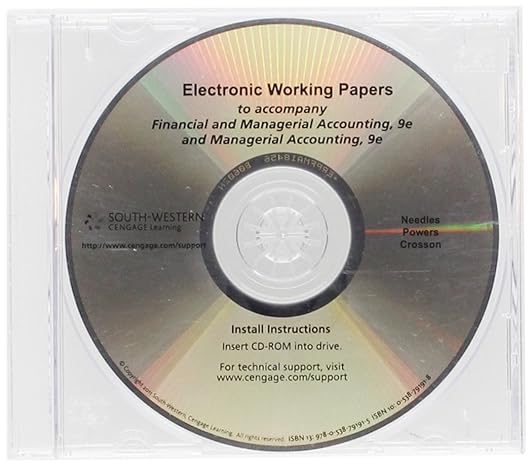Answered step by step
Verified Expert Solution
Question
1 Approved Answer
Question 17 Combat Fire, Inc. manufactures steel cylinders and nozzles for two models of fire extinguishers: (1) a home fire extinguisher and (2) a commercial
Question 17
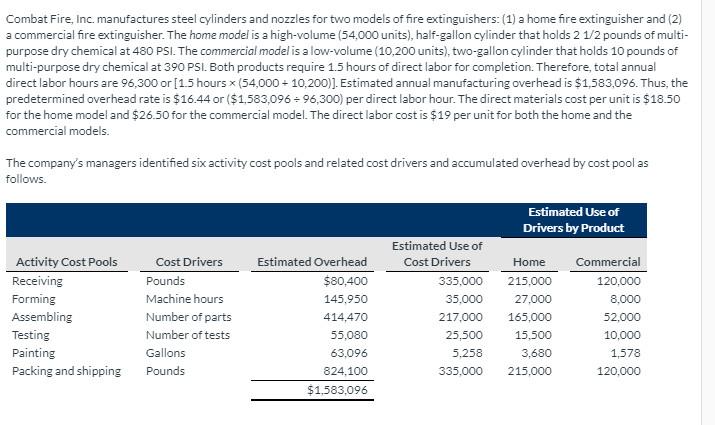

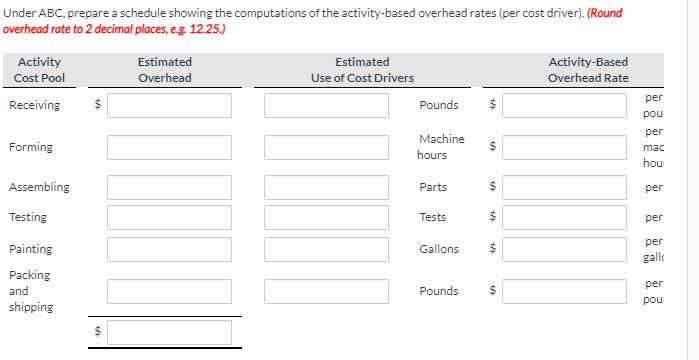
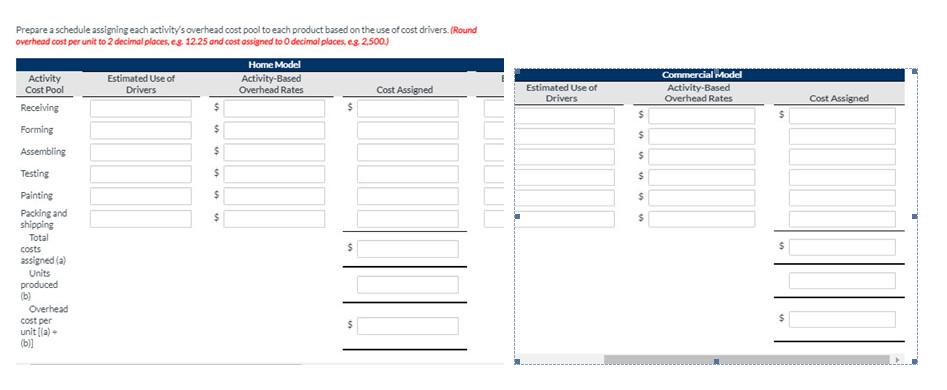
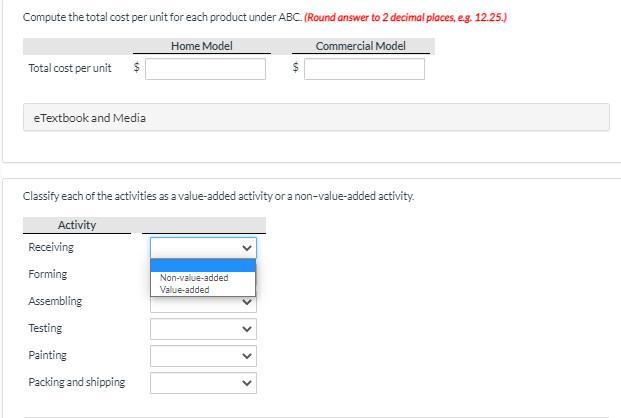
Combat Fire, Inc. manufactures steel cylinders and nozzles for two models of fire extinguishers: (1) a home fire extinguisher and (2) a commercial fire extinguisher. The home model is a high-volume (54,000 units), half-gallon cylinder that holds 2 1/2 pounds of multi- purpose dry chemical at 480 PSI. The commercial model is a low-volume (10,200 units), two-gallon cylinder that holds 10 pounds of multi-purpose dry chemical at 390 PSI. Both products require 1.5 hours of direct labor for completion. Therefore, total annual direct labor hours are 96,300 or [1.5 hours x (54,000 + 10,200)]. Estimated annual manufacturing overhead is $1.583,096. Thus, the predetermined overhead rate is $16.44 or ($1,583,096 = 96,300) per direct labor hour. The direct materials cost per unit is $18.50 for the home model and $26.50 for the commercial model. The direct labor cost is $19 per unit for both the home and the commercial models. The company's managers identified six activity cost pools and related cost drivers and accumulated overhead by cost pool as follows. Estimated Use of Drivers by Product Activity Cost Pools Receiving Forming Assembling Testing Painting Packing and shipping Cost Drivers Pounds Machine hours Number of parts Number of tests Gallons Pounds Estimated Overhead $80,400 145,950 414,470 55.080 63.096 824,100 $1.583,096 Estimated Use of Cost Drivers 335,000 35,000 217,000 25,500 5.258 Home 215.000 27.000 165,000 15,500 3.680 215.000 Commercial 120,000 8.000 52,000 10,000 1,578 120.000 335.000 Under traditional product costing, compute the total unit cost of each product. (Round answers to 2 decimal places, eg. 12.50.) Home Model Commercial Model Total unit cost $ e Textbook and Media Under ABC, prepare a schedule showing the computations of the activity-based overhead rates (per cost driver). (Round overhead rate to 2 decimal places, eg. 12.25.) Activity Cost Pool Receiving Estimated Overhead Estimated Use of Cost Drivers Pounds Activity-Based Overhead Rate $ per pou Forming Machine hours $ $ per mac hou Parts per Assembling Testing Tests $ $ $ $ per Gallons $ per gall Painting Packing and shipping Pounds $ per pou Estimated Use of Drivers Commercial Model Activity-Based Overhead Rates Cost Assigned $ $ $ $ $ Prepare a schedule assigning each activity's overhead cost pool to each product based on the use of cost drivers. (Round overhead cost per unit to 2 decimal places, es 12.25 and cost assigned to decimal places, es 2,500.) Home Model Activity Estimated Use of Activity-Based Cost Pool Drivers Overhead Rates Cost Assigned Receiving Forming $ Assembling $ Testing $ Painting Packing and $ shipping Total costs $ assigned (a) Units produced (b) Overhead cost per unita) (b)] $ $ $ $ Compute the total cost per unit for each product under ABC. (Round answer to 2 decimal places, eg. 12.25.) Home Model Commercial Model Total cost per unit $ eTextbook and Media Classify each of the activities as a value-added activity or a non-value-added activity. Activity Receiving Non-value-added Value-added Forming Assembling Testing Painting Packing and shipping
Step by Step Solution
There are 3 Steps involved in it
Step: 1

Get Instant Access to Expert-Tailored Solutions
See step-by-step solutions with expert insights and AI powered tools for academic success
Step: 2

Step: 3

Ace Your Homework with AI
Get the answers you need in no time with our AI-driven, step-by-step assistance
Get Started


